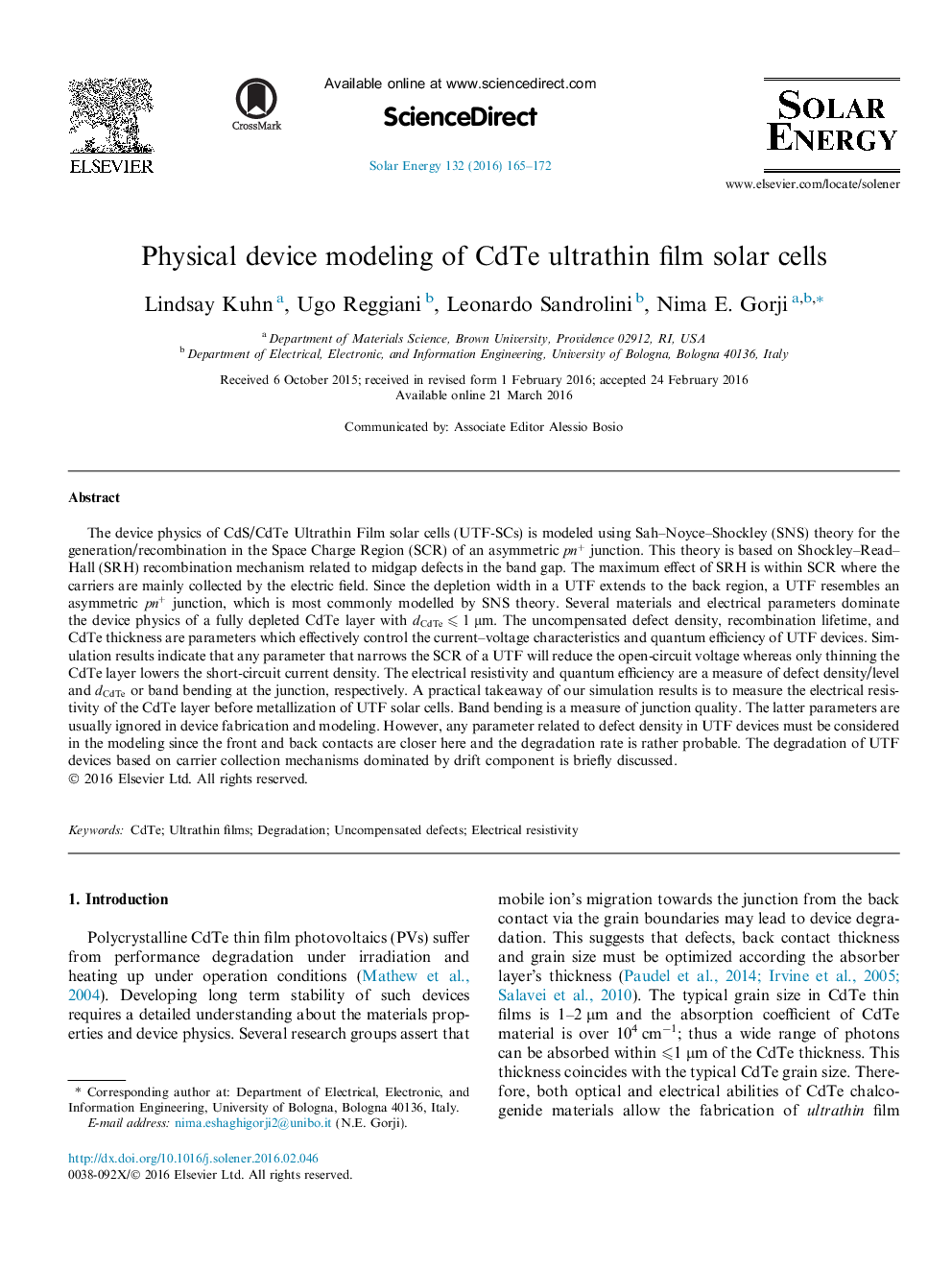| کد مقاله | کد نشریه | سال انتشار | مقاله انگلیسی | نسخه تمام متن |
|---|---|---|---|---|
| 1549393 | 1513086 | 2016 | 8 صفحه PDF | دانلود رایگان |

• The carrier transport in CdTe ultrathin film solar cell is modeled using Sah–Noyce–Shockley theory.
• The depletion width is extended to the back region of an ultrathin film device.
• Degradation of ultrathin films is associated with the defect density and defect level across CdTe layer.
The device physics of CdS/CdTe Ultrathin Film solar cells (UTF-SCs) is modeled using Sah–Noyce–Shockley (SNS) theory for the generation/recombination in the Space Charge Region (SCR) of an asymmetric pn+pn+ junction. This theory is based on Shockley–Read–Hall (SRH) recombination mechanism related to midgap defects in the band gap. The maximum effect of SRH is within SCR where the carriers are mainly collected by the electric field. Since the depletion width in a UTF extends to the back region, a UTF resembles an asymmetric pn+pn+ junction, which is most commonly modelled by SNS theory. Several materials and electrical parameters dominate the device physics of a fully depleted CdTe layer with dCdTe⩽1dCdTe⩽1 μm. The uncompensated defect density, recombination lifetime, and CdTe thickness are parameters which effectively control the current–voltage characteristics and quantum efficiency of UTF devices. Simulation results indicate that any parameter that narrows the SCR of a UTF will reduce the open-circuit voltage whereas only thinning the CdTe layer lowers the short-circuit current density. The electrical resistivity and quantum efficiency are a measure of defect density/level and dCdTedCdTe or band bending at the junction, respectively. A practical takeaway of our simulation results is to measure the electrical resistivity of the CdTe layer before metallization of UTF solar cells. Band bending is a measure of junction quality. The latter parameters are usually ignored in device fabrication and modeling. However, any parameter related to defect density in UTF devices must be considered in the modeling since the front and back contacts are closer here and the degradation rate is rather probable. The degradation of UTF devices based on carrier collection mechanisms dominated by drift component is briefly discussed.
Journal: Solar Energy - Volume 132, July 2016, Pages 165–172